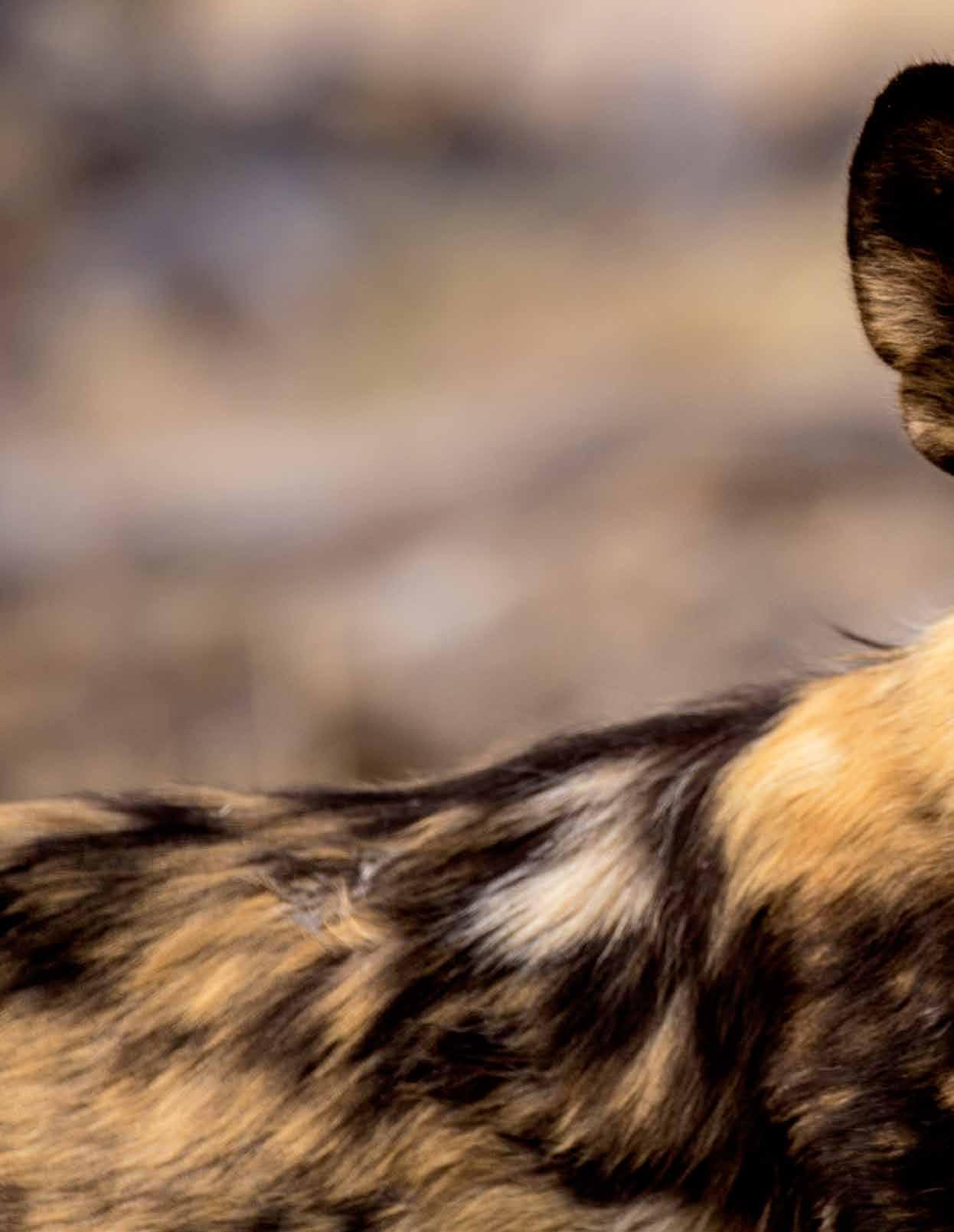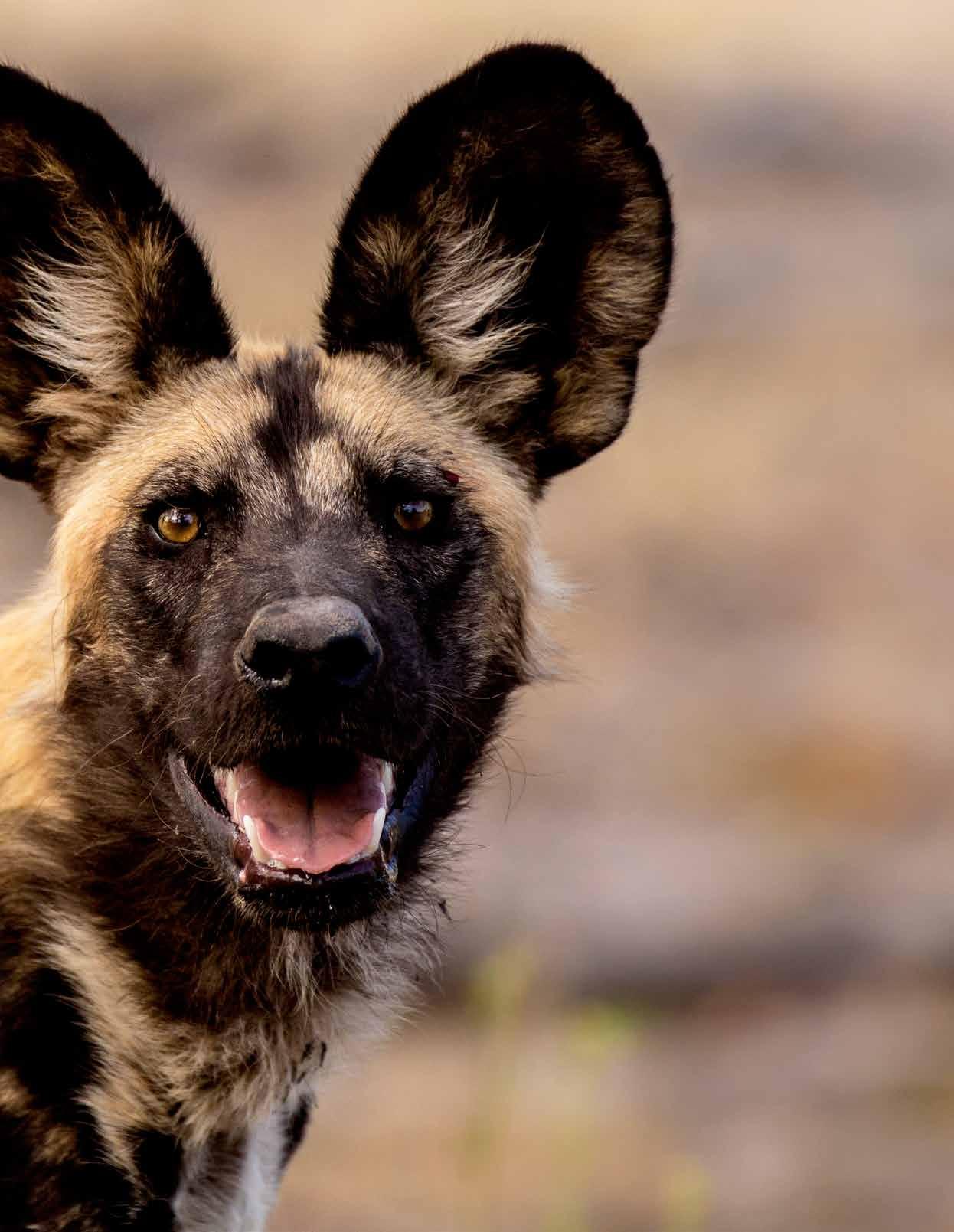
3 minute read
ANIMAL KINGDOM The African Wild Dog
The wild dog is one of the world’s most endangered mammals. As human populations expand, leading to agriculture, settlements, and roads, wild dogs are losing the spaces in which they were once able to roam freely.
The African wild dog is the largest indigenous canine in Africa. Also sometimes called the hunting dog or African painted dog — it has a colourful, patchy coat; large bat-like ears; and a bushy tail with a white tip that may serve as a flag to keep the pack in contact while hunting. They have only four toes per foot, unlike other dogs which have five toes on their forefeet. No two wild dogs are marked exactly the same, making it easy to identify individuals.
Advertisement
The African wild dog has very strong social bonds, stronger than those of sympatric lions and spotted hyenas; thus, solitary living and hunting are extremely rare in the species. They live in packs of two to 27 adults and yearling pups, dominated by a monogamous breeding pair. The species differs from most other social animals because males remain in the natal pack, while females disperse (a pattern also found in primates such as gorillas, chimpanzees, and red colobuses).
African wild dog populations in East Africa appear to have no fixed breeding season. The African wild dog produces more pups than any other canid, with litters containing around six to 16 pups, so a single female can produce enough young to form a new pack every year. Because the amount of food necessary to feed more than two litters would be impossible to acquire by the average pack, breeding is strictly limited to the dominant female, which may kill the pups of subordinates.
After giving birth, the mother stays close to the pups in the den, while the rest of the pack hunts and feeds her. She typically drives away pack members approaching the pups until they are old enough to eat solid food at three to four weeks of age. The pups leave the den around the age of three weeks and are suckled outside. They are weaned at the age of five weeks, when they are fed regurgitated meat by the
other pack members. Both males and females are known to babysit. At seven weeks, the pups begin to take on an adult appearance, and once they reach the age of eight to 10 weeks, the pack abandons the den and the young follow the adults during hunts. The youngest pack members are permitted to eat first on kills, a privilege which ends once they become yearlings. On the whole, the dogs are surprisingly non-aggressive; for example, they do not fight over food but instead beg to indicate their wish to eat.

Sneeze communication and “voting”
African wild dog populations have been observed “rallying” before they set out to hunt. Not every rally results in a departure, but departure becomes more likely when more individual dogs “sneeze”. These sneezes are characterised by a short, sharp exhale through the nostrils. When members of dominant mating pairs sneeze first, the group is much more likely to depart. If a dominant dog initiates, around three sneezes guarantee departure. When less dominant dogs sneeze first, if enough others also sneeze (about 10), then the group will go hunting. Researchers assert that wild dogs in Botswana, “use a specific vocalisation (the sneeze) along with a variable quorum response mechanism in the decision-making process [to go hunting at a particular moment]”. Even when their leader – always female – dies, they vote for her successor with whoops and hoots. African wild dogs were once found across the African continent but their populations have declined due to loss of habitat and threats from farmers who fear for their livestock. There were reported sightings of the
African dog in Uganda in 2009, all in and around Kidepo Valley National Park, but none were detected in the carnivore survey made by Wildlife Conservation Society staff the same year. It is thought that this species is not resident in Uganda. Currently, the largest numbers are found in Mozambique, Zimbabwe, Kenya, Botswana, Zambia, Tanzania, and Namibia.










